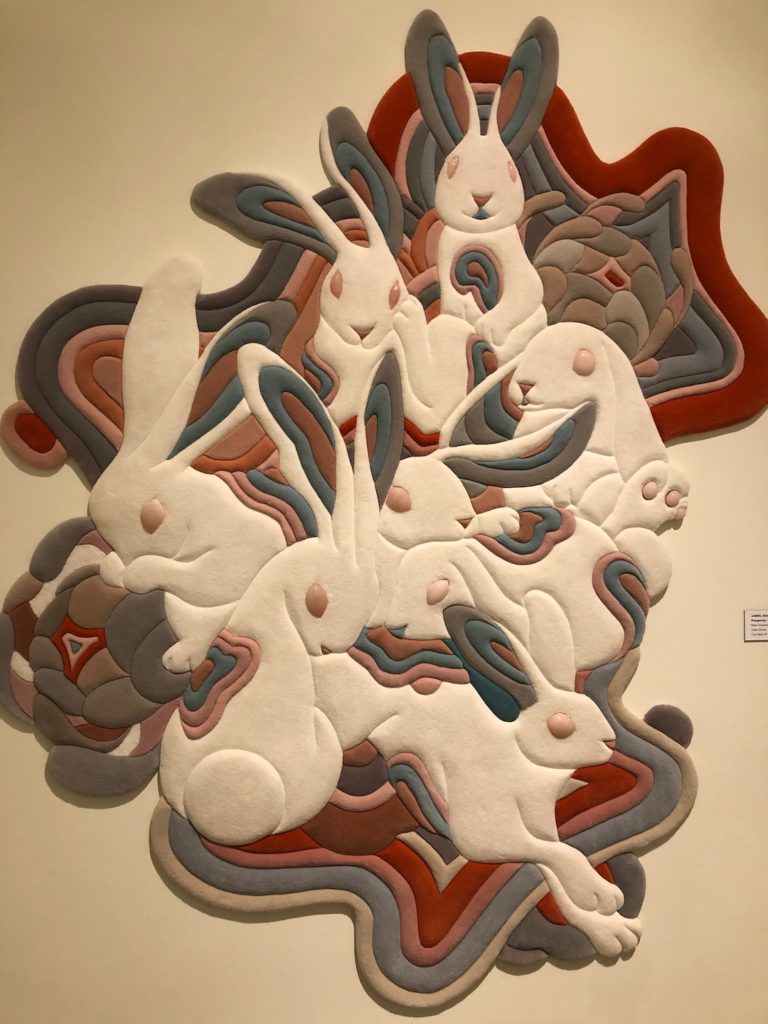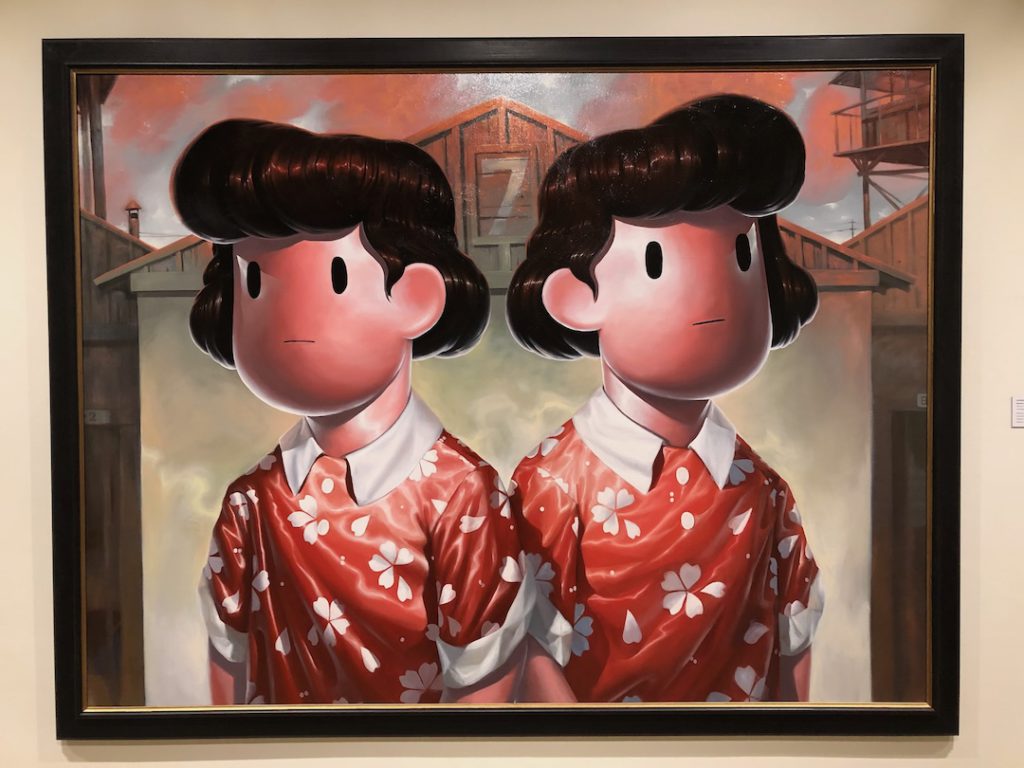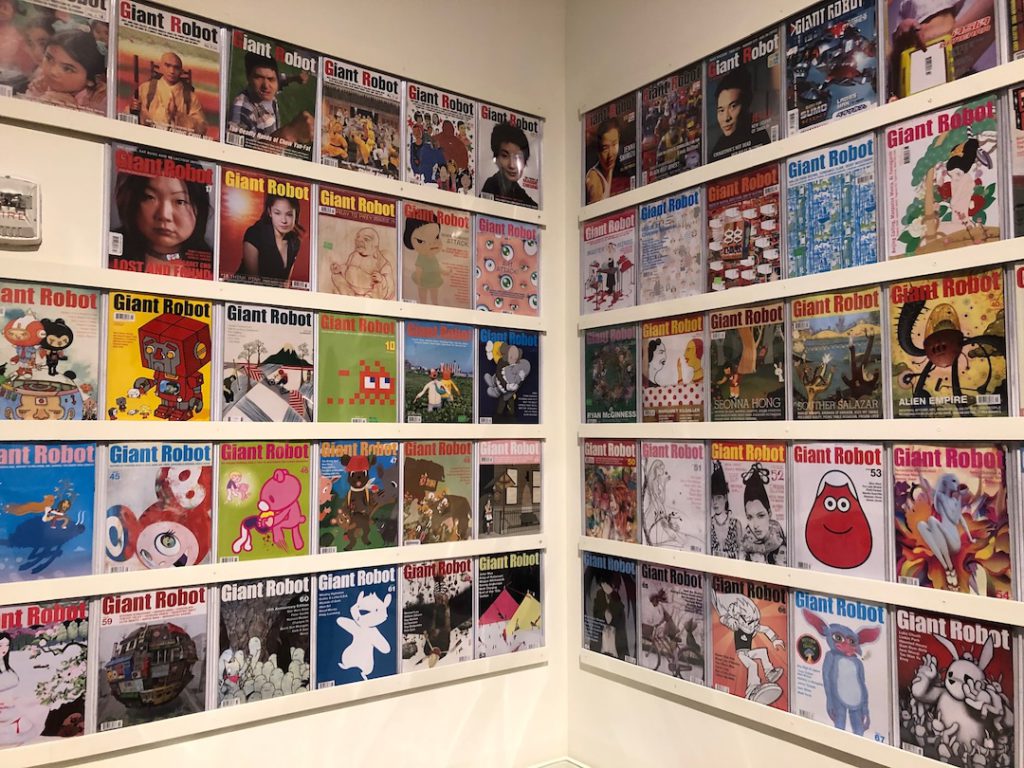
It’s a been a minute, but the Giant Robot Biennale is back. Between 2007 and 2015, the group exhibition developed by Erik Nakamura and the Japanese American National Museum popped up roughly every other year, bringing together a cross-section of artists that you might recognize from shows at the GR2 Gallery in West L.A., or from the pages of the magazine Giant Robot, which ran from 1994 until 2010 and helped introduce audiences to artists like Takashi Murakami and Yoshitomo Nara.
Giant Robot, the magazine, was a big influence on me when I was in college. I picked it up for the bands, but got deep into the art as I read through each issue. Consequently, the Giant Robot Biennale became one of my favorite events in L.A. (I covered the second and third shows for L.A. Weekly. Only one of those articles still exists online and the photos have since disappeared.)


Nearly nine years have passed since the last Giant Robot Biennale, but there was still a sense familiarity inside the exhibition. Artists like Luke Chueh, James Jean and Yoskay Yamamoto, who have previously participated in the event, returned.

An installation by Yoskay Yamamoto called “Moonage Daydream” functions as a centerpiece for the Biennale. It’s a table-sized cityscape painted in shades of blue and white, with bits of exposed wood here and there. Above it hangs a large moon and a smattering of stars. In his description of the piece, Yamamoto, who moved to the U.S. from Japan as a teenager and has been a part of Giant Robot’s artist community for over a decade, writes that “Moonage Daydream” is about having a “caring support system.”
“The gradation of the colors captures the illumination of the peaceful moon that acts as a spirit guiding us in our lives,” says the artist’s statement. “So much of our culture focuses on individual gains and advancements. I think self-growth can be beneficial, but if we can grow together as a community, our society can be kinder and healthier in the future.”

Yamamoto’s works for the show were also a tribute to mingei, which is Japanese folk art or crafts, and were made with an attention to sustainability, according to the artist’s statements. The papier-mâché elements were made with discarded pieces of paper. Scrap wood, including leftovers from Nakamura’s fence, were used, as well as odds and ends found in flea markets and thrift shops.

Giant Robot Biennale is designed to see in person, so there are wonderful pieces that just aren’t made for Instagram, which is great. That’s one of the reasons why I love the mixed media sculptures and diaromas from Sean Chao. Even a good photographer isn’t going to capture the layers and details in the scenes that Chao builds with polymer clay and other materials. You have to get in close for yourself and try to figure out the narrative that’s embedded within them.
The Biennale is positioned so that you can enter it after going through JANM’s permanent exhibit, which is an exploration of Japanese American communities and history. With that in mind, it is poignant that Giorgiko, the L.A.-based duo of Darren and Trisha Inouye, addressed the incarceration of Japanese Americans during World War II.

There’s also a small section of the exhibition dedicated to Giant Robot’s history. You can hear bits of recorded interviews as you look at the now-vintage gear that helped make the magazine possible. (My favorite piece is a CD-R with “Photoshop 6” scribbled on it in black marker.) Covers of Giant Robot issues line a corner of the gallery. It’s a nice tribute, not just to the magazine, but to DIY print media. Outside the exhibition, there’s a table with a few copies of Giant Robot that you can read during your visit.

Giant Robot Biennale runs at Japanese American National Museum through September 1. The museum’s address is 100 N. Central Avenue, but it’s basically right across 1st St. from the Little Tokyo A/E Metro station. While both street and lot parking are available in the neighborhood, spots go pretty fast on the weekends. If that’s when you’re planning to visit, Metro might be a better way to travel.
On most days, JANM is $16 for adults, $9 for students and seniors and free for children ages 5 and under. However, it’s free for everyone on Thursdays between 5 p.m. and 8 p.m. and all day on the third Thursday of the month. Check the JANM website for more information on visiting.
Liz O. is an L.A.-based writer and DJ. Read her recently published work and check out her upcoming gigs.
Keep Reading:
VISIT COREY HELFORD GALLERY TO SEE THE LATEST WORK FROM TOP NEW CONTEMPORARY ARTISTS
